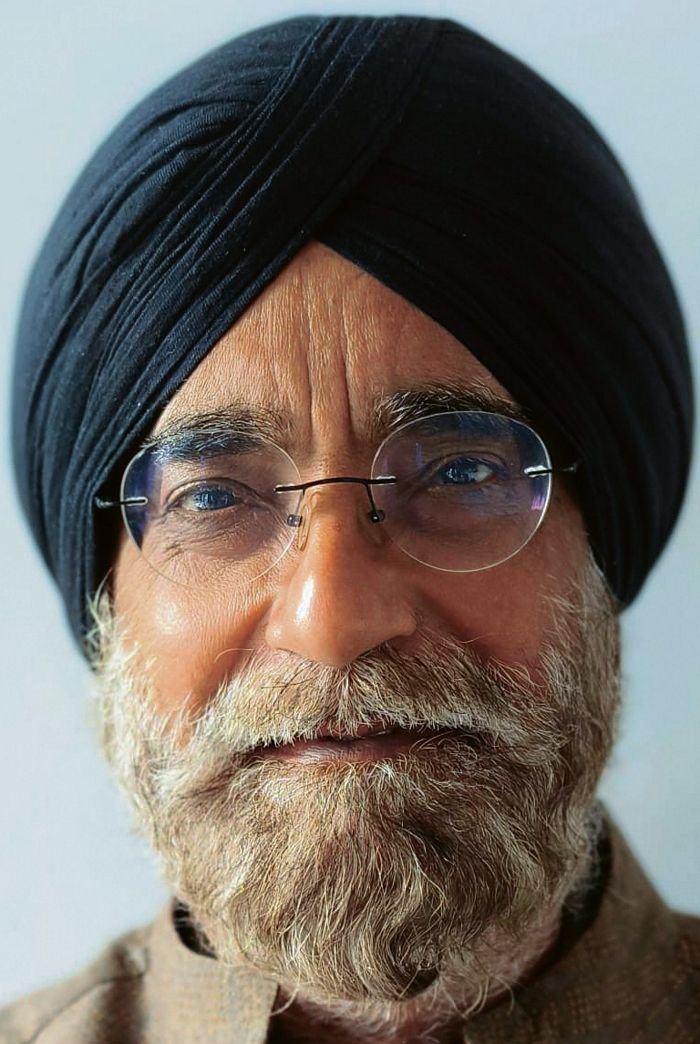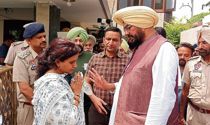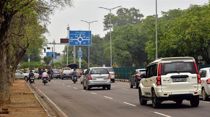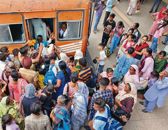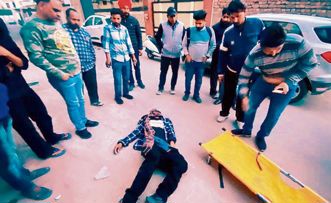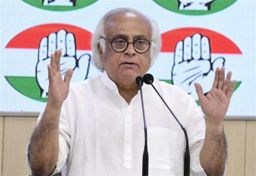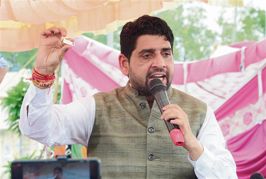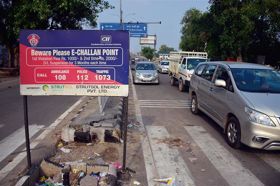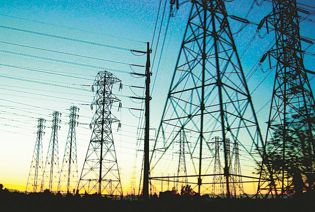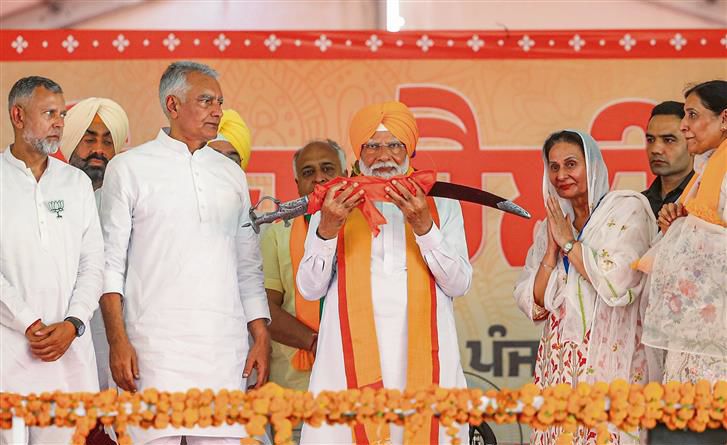
Battleground: Never before have the stakes been so high for PM Modi in Punjab. PTI
Surinder S Jodhka
Professor, Centre for the Study of Social Systems, JNU
PUNJAB will go to the polls on June 1 to elect representatives for 13 Lok Sabha seats. Last week, Prime Minister Narendra Modi addressed three rallies in the state. As expected of BJP leaders and particularly PM Modi, he pitched his appeal in emotional idioms, underlining his personal bonding with Punjabis. Wearing a kesri-coloured turban, he reminded Punjabis (read Sikhs) that one of the Panj Pyaras — Guru Gobind Singh’s five beloved ones who had been baptised on Baisakhi day in 1699 — was a Gujarati. Thus, his bond with the Sikh community was that of a shared kinship (khoon ka rishta), he said.
Punjab has been an enigma for PM Modi. Defying the national trend, his appeal among Punjabi voters has been limited.
Punjab has been an enigma for the Prime Minister. Defying the national trend, his appeal among the Punjabi voters has been rather limited. This is despite the fact that unlike southern states such as Kerala and Tamil Nadu, the BJP and its earlier version, the Jana Sangh, have had a stable presence in the state. Although its appeal has been mostly among urban Hindus, the party has been in power in the state in alliance with the predominantly Sikh party, the Shiromani Akali Dal (SAD). It won two Lok Sabha seats in 2019. Both were constituencies with a substantial Hindu population. This time, however, the BJP is independently contesting all seats in the state.
Recognising that its identification solely with the urban Hindus limits its chances of success, the BJP has focused this time on winning over Sikh voters. To establish that it can indeed represent the Sikhs, it began to aggressively recruit Sikh leaders from other political parties and make them its candidates for the Lok Sabha elections, often at the cost of ignoring its own cadre. This has not been a difficult ideological proposition for the BJP as, unlike the Muslims, it sees the Sikhs as being part of the larger Hindu fold (as also does the RSS, its founding head and patron).
Though post-Partition Punjab has rarely seen large-scale communal violence, sectarian divisions have been quite sharp in the state’s politics. Sikh identity politics is mostly articulated by invoking the fear of Hindu majoritarianism. The advocates of Punjabiyat, too, have mostly been Sikhs. Likewise, until recently, the urban Hindu elite of Punjab rarely identified with the regional interests and identitarian concerns of the state.
The story of the Hindu-Sikh divide goes back to the late 19th century and was framed by the politics of the Arya Samaj and the Singh Sabhas. The narrative survived the Jana Sangh/BJP-Akali divide. Interestingly, despite their communal hostility, the two easily aligned for pragmatic electoral reasons while contesting against the Congress, as their political constituencies remained exclusive.
This divide began to weaken with the Parkash Singh Badal-led SAD deciding to turn the party non-sectarian. While it continued to have sway over Sikh religious politics and controlled the Shiromani Gurdwara Parbandhak Committee (SGPC), it recruited Hindus and even gave them positions of leadership. The farmers’ movement of 2020-21 also played an active role in weakening the Hindu-Sikh divide. Even though the Punjabi farmers actively invoked the language of Sikhi, their mobilisation strategies were proactively inclusive. They also received enthusiastic support from all sections of the Punjabi society.
The success of the Aam Aadmi Party (AAP) in the 2022 Assembly elections further showed that Punjabi voters were not keen to vote for their identities, religious or regional. With the BJP, too, changing its political idiom and presenting itself as being as much a party of the Sikhs as of the Hindus, a significant shift has occurred in the regional political arena.
While the 2024 parliamentary election in Punjab is critical for all major players, the Akalis, the AAP, and the Congress, it is the most crucial election for the BJP and personally for PM Modi. It is not the first time that Modi has campaigned in Punjab. However, never before have the stakes for him been so high. What are the chances of his success? What is likely to be his biggest challenge?
In his speeches delivered at three places, he raised obvious questions about the failure of the ruling party (AAP) in the state and repeatedly raised the issues that the Sikhs have had with the Congress in the past. Despite his efforts to shift the identity of his party from being exclusive representatives of the Hindus to that of a Hindu-Sikh party, his narrative has remained largely emotional and structured around religious and communitarian idioms. He has attempted to strike a chord with the Sikhs by his identification with the community and referring to them as a core constituent of India’s national pride.
A large majority of the Sikhs would welcome such an affirmation of their nationalist credentials, given that, until recently, some leaders of the ruling regime have repeatedly conflated the Sikhs with Khalistanis or separatists. Also, Sikh/Punjabi nationalists tend to be suspicious of the BJP’s anti-Pakistan rhetoric. They are happy with the opening of the Kartarpur corridor and may also be willing to give due credit to PM Modi for it, but they do not want tensions with the neighbouring country to escalate. After all, in case the temperatures rise at the border, among the first to pay the price for it would be the Punjabis once again.
The bigger challenge for Modi lies elsewhere, in his economic policies and the ongoing farmers’ protests against them. While he withdrew the three farm laws after a year-long sit-in by farmers at the borders of Delhi, their discontent remains. Several of their demands remain pending and their protests continue to go unheard. They have not been allowed even to travel to Delhi to protest for their demands.
Demographically, the number of those engaged in active farming is no longer very large, perhaps less than a quarter of the entire electorate. But they have come to occupy the core of the Punjabi/Sikh sensibility. The moral weight their protests carry is felt far beyond those engaged in farming. They have also articulated a critique of the neo-liberal economic policies, which have a wider appeal, perhaps even among the urban Hindu traders of Punjab, the traditional vote bank of the BJP. Would all this matter electorally? We will have to wait for the June 4 verdict.
Join Whatsapp Channel of The Tribune for latest updates.






